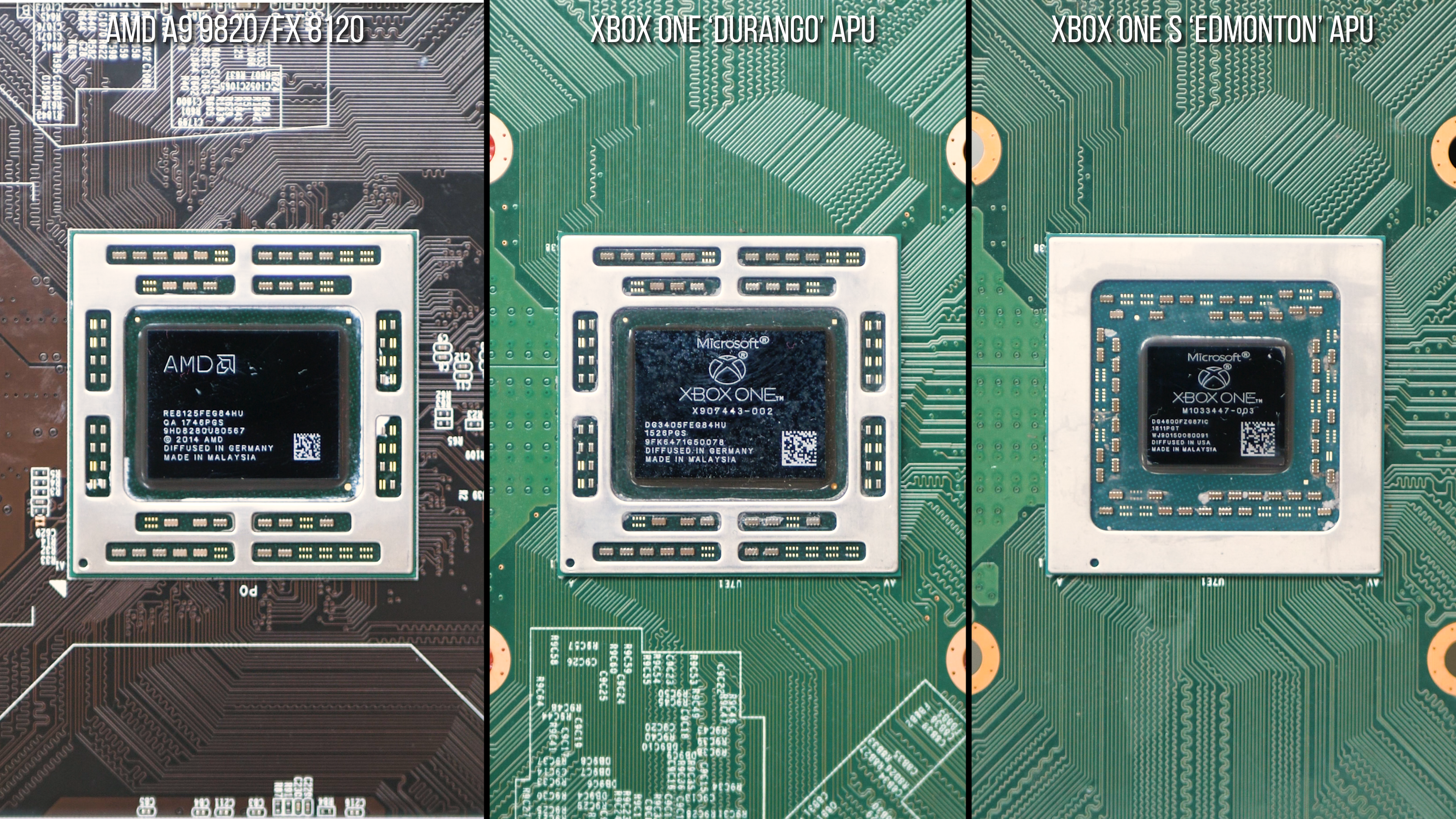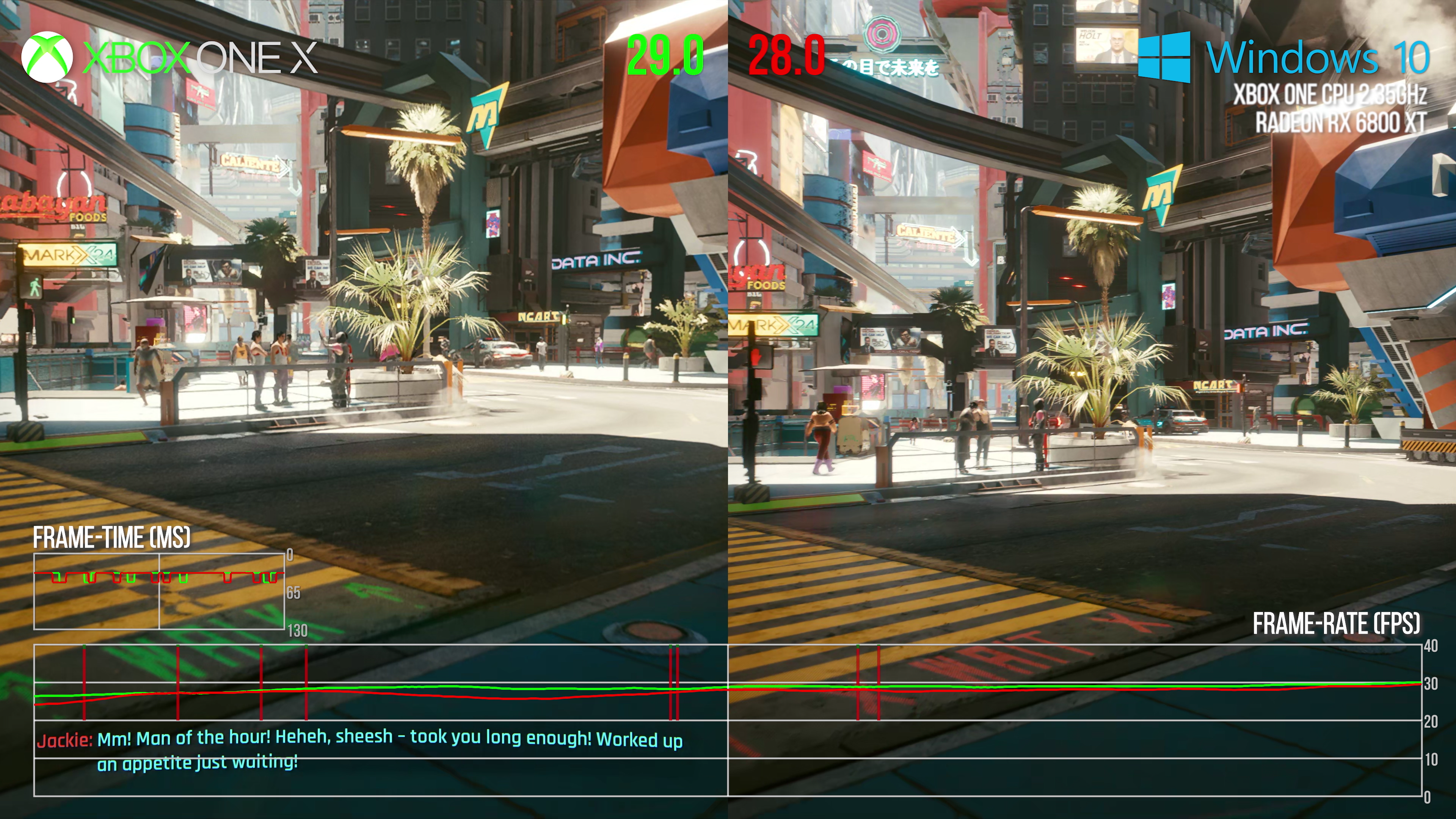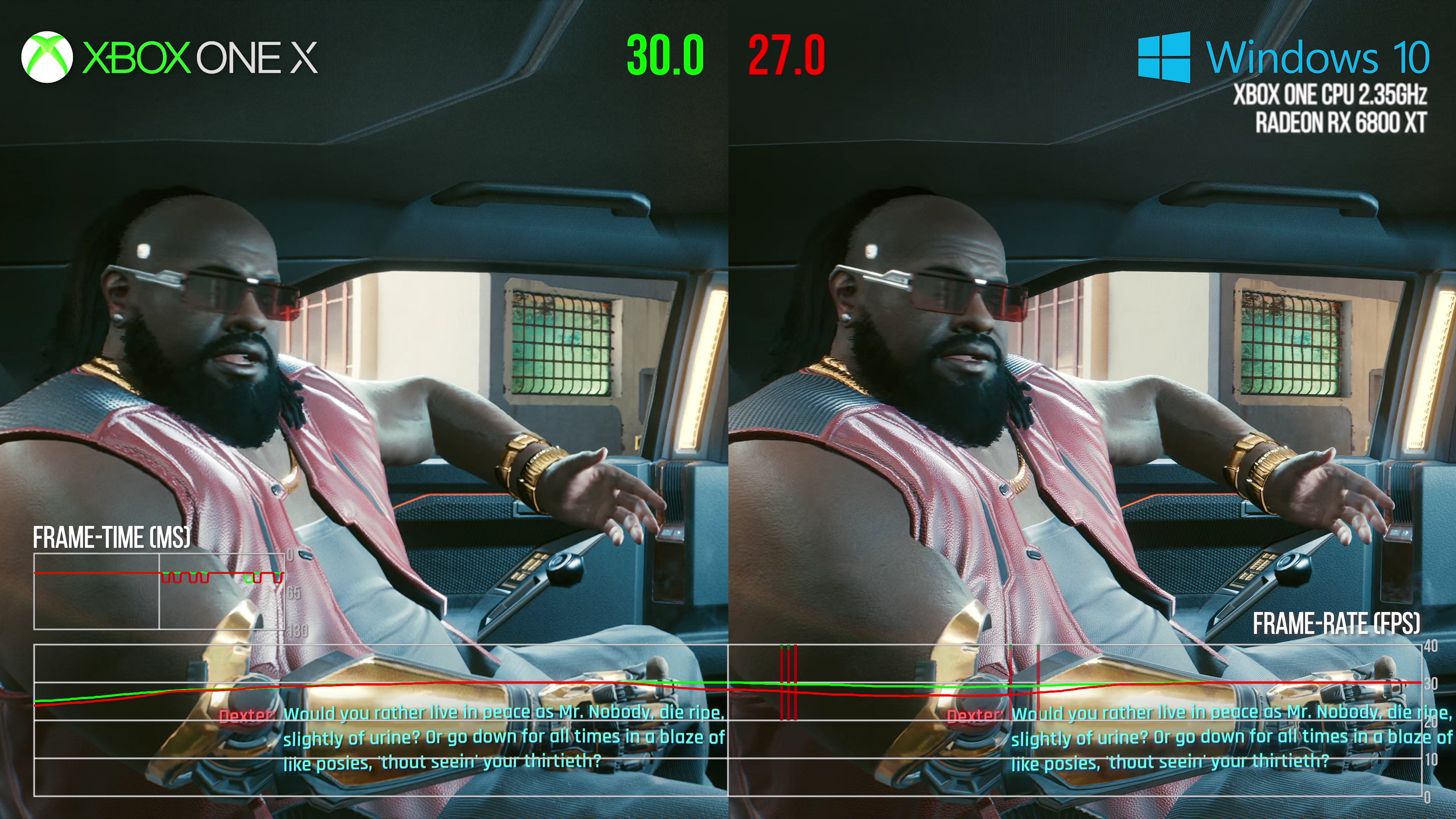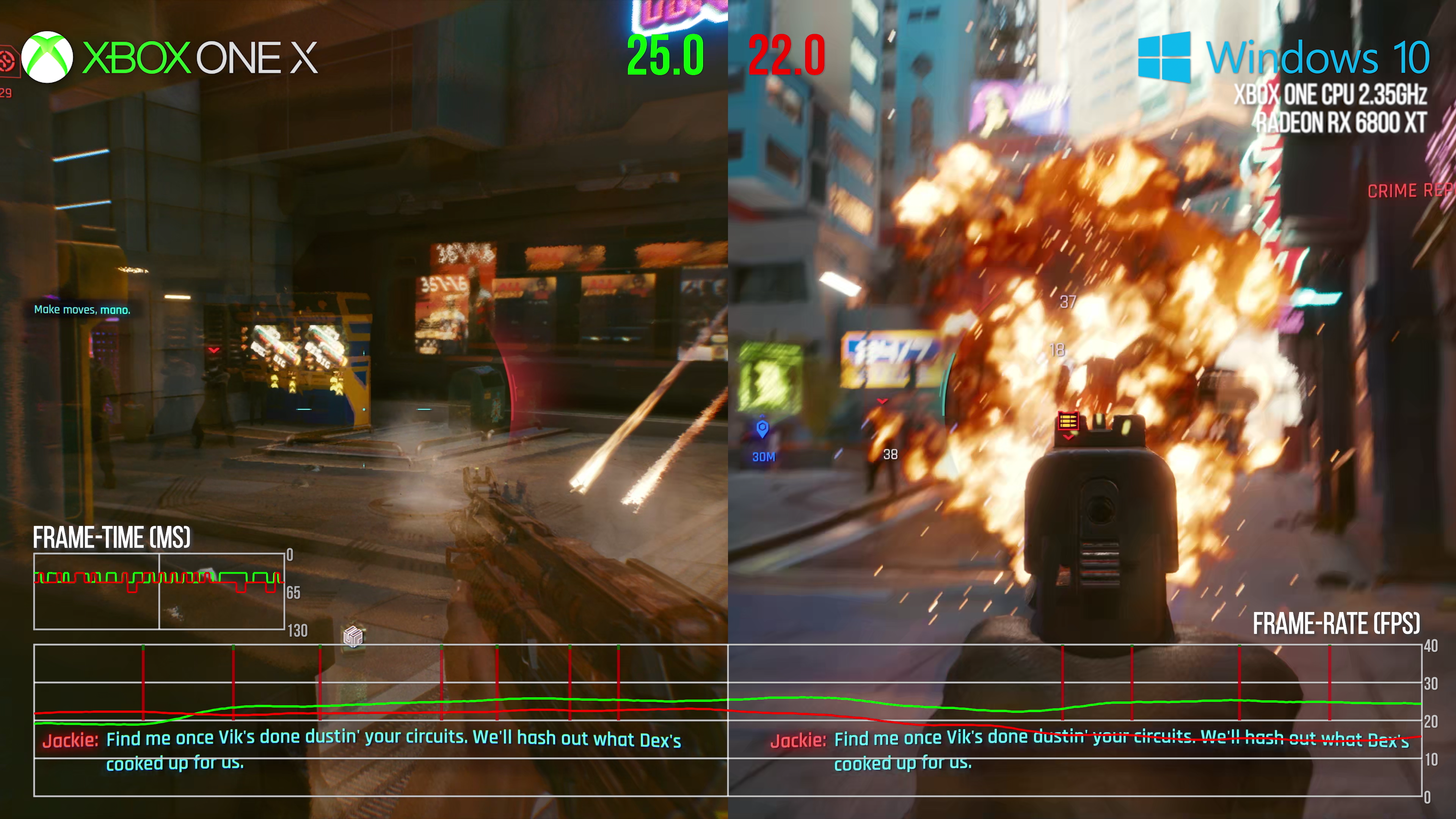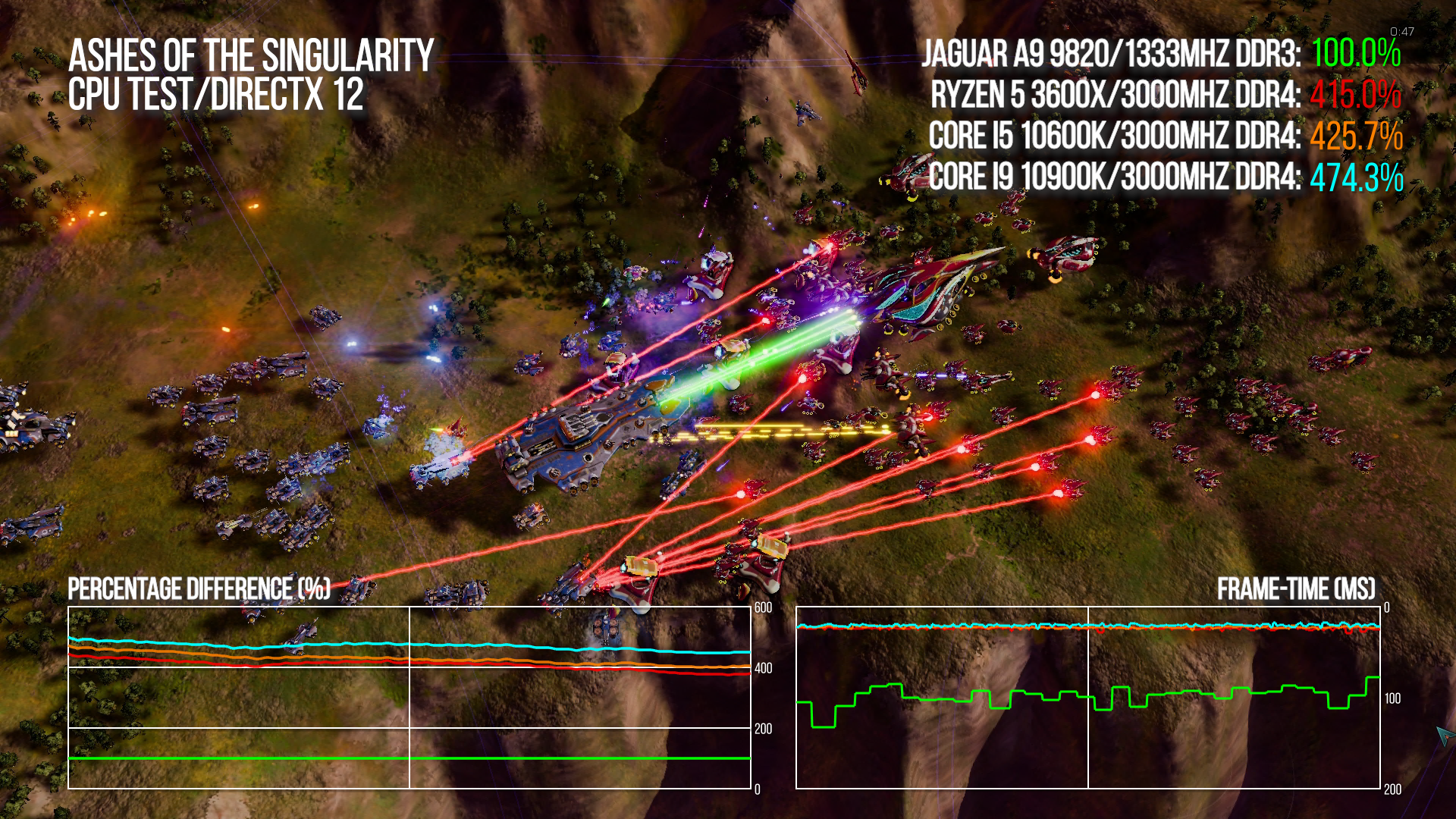While there is convergence in technologies - in terms of AMD CPU and GPU architecture at least - the last-gen consoles were still a novelty in their own way. The AMD Jaguar CPU cores were originally targeting low power laptops and tablets, only reaching the desktop PC market in a quad-core configuration with the AM1 ‘Kabini’ platform, designed for basic tasks and even more basic gaming. Faced with a lack of CPU options that would work within a console, Microsoft and Sony adapted the same solution - strapping two of those quad-core CPU complexes together. If they couldn’t have a fast CPU, they’d have a ‘wide’ one instead. The graphics side of the equation was more easily accommodated, tapping into AMD’s new-for-the-time Graphics Core Next architecture. All of which makes the board based on the Xbox One processor I acquired from AliExpress a somewhat weird proposition: its CPU architecture is extremely slow by PC standards, while its graphics are out of date, to put it kindly. Even more curious is that the processor is the original 28nm ‘Durango’ offering found in the hulking set-top box Xbox One - not the smaller, cooler, more efficient model found in Xbox One S. Markings on the chip may even suggest that the Chinese boards are built using left-over quality assurances samples - after all, we would assume that this chip left production some time back in 2016. The BIOS on the motherboard is also strange, simplistic in some areas, overly verbose in others, while many functions do not seem to work correctly. In one area of the BIOS, you can swap the CPU type from an A9 9820 to an RX 8120 - nonsense names really as the chip doesn’t change, but the clock speed does. The A9 clocks at 2.35GHz (similar to the 2.3GHz Xbox One X) while the RX drops back to 1.75GHz - a match for the vanilla Xbox One, as you might expect. There are many deficiencies to the board though, not least in its memory set-up. Xbox One topped out at 68GB/s of memory bandwidth via embedded DDR3 running at 2133MHz via a quad-channel interface. This board says it supports up to 1866MHz, but only really works at 1333MHz, while bandwidth tops out at a miniscule 14GB/s - just 21 per cent of Xbox One’s throughput. This makes testing integrated graphics a waste of time, especially as the only drivers available for the GPU date back from 2017, while the 32MB of on-chip ESRAM - essential for fast Xbox One performance - is not accessible via Windows. Cyberpunk 2077 won’t start, and neither will Doom Eternal or Wolfenstein: The New Colossus. Destiny 2 crashes, though I did get Crash Bandicoot: the N.Sane Trilogy did run. This operates at 900p30 on Xbox One, but can only deliver around 20fps on PC via the nerfed configuration. However, CPU testing is possible - though it does seem likely that we’re still bandwidth-constrained compared to the Xbox console. Put simply: integrated graphics are off the table if we’re to play the PC version of Cyberpunk 2077 on the Xbox One processor, we’re going to need to attach a discrete graphics card and even then we should assume further challenges in delivering anything like a console experience. But before that, we could run some basic benchmarks - and that’s where things start to get put into perspective. The Xbox One APU has lower single core performance than a 2007-class Intel Core 2 Quad Q6600, redeemed only by having twice as many cores. However, I suspect that higher-end or overclocked Core 2 Quads could match it, while the first-gen Core i7s from 2008 would positively wipe the floor with it. It’s at this point where we need to stand back and appreciate just how much console developers got from a CPU that offered so little. Beyond that, adding an external graphics card would be the only way we would get any idea of the CPU’s gaming performance. This may sound simple in theory, but it’s anything but as there is not a standard PCIe 16x slot available. I used a PCIe x1 to x16 riser - the type used on cryptocurrency-orientated motherboards - and remarkably, bearing in mind how much of a failure the BIOS is, the option to switch from internal to external graphics worked. Unfortunately, the interconnect is so limited, it introduces a further bottleneck to performance: if the GPU can’t be fed effectively by the CPU, it’ll register as a CPU limitation. I overcame this - to a certain extent - by rigging up a wider interface via the M.2 NVMe port on the board. This produced a workable gaming PC when an AMD GPU was used, but I still think a limited interface between CPU and GPU may be holding back overall performance. On top of that, consoles use a unified memory architecture that PC still doesn’t have, meaning that a ton of data will be copied between system RAM and the graphics card’s VRAM - something that consoles don’t need to worry about. But with our Xbox One CPU connected to a state-of-the-art AMD Radeon RX 6800 XT, I started to get tangible results. First, I loaded up Doom Eternal - renowned for its incredible CPU performance in the PC space - and found that our lashed up console-based PC could run at between 50 to 90fps at high settings, equivalent to the Xbox One X version. The RX 6800 XT could power through to 4K resolution with plenty of power in reserve. The idea that a modern engine - designed with next-gen in mind - would deliver this performance from such a low power CPU is quite remarkable. I suspect the Jaguar CPU is delivering less performance than Xbox One X (even though CPU clocks are identical), but it’s worth remembering the overhead of Windows 10 and much less efficient graphics and storage APIs, plus the memory bandwidth and PCI Express interface challenges. As for trying to get Cyberpunk 2077 running, the reasons for choosing this one are obvious. It’s a highly controversial gaming release, it runs poorly on last-gen consoles and conventional wisdom suggests that the game is simply too complex to run on Jaguar processors, which are way below the equivalent of the Core i5 3570K and AMD FX 8320 chips recommended for minimum spec. However, results were intriguing when matched up with like-for-like content running on Xbox One X. In order to make for a fair comparison, I used the -qualityLevel=ConsolePro launch argument that should in theory set-up Cyberpunk 2077 with settings broadly in line with Xbox One X, tweaking where necessary. I added back in post-processing I know the console has, dialling back the crowd density it doesn’t and also invoking the ‘slow storage’ option. However, I did run the game from SSD on both systems, using the latest 1.11 patch. We don’t want to be limited by the console’s laptop hard drive, but in truth, moving from spinning rust to solid state storage cannot overcome a game with severe CPU-based limitations. As you’ll see in the video, our Xbox One-powered PC could run at 4K 30fps with no graphics-related performance drops. Xbox One X uses dynamic resolution scaling to ease the GPU load, but in areas where the PC outperformed Xbox One X, it does suggest that there are still some momentary graphics bottlenecks on the console. But what is more fascinating is that in most cases, where our Jaguar-powered PC dropped from 30fps, Xbox One would drop too. This suggests that it really is the CPU and the demands placed on it that are the heart of the problem facing Cyberpunk 2077 running smoothly on last-gen machines. It’s been suggested that storage is also an issue, but running from SSD on both systems would eliminate that from this specific testing. Another takeaway from the analysis is that where Xbox One X drops, there’s a strong likelihood of PC dropping harder - remember that the consoles get far more efficient APIs while the fixed hardware allows developers to target it specifically. On top of that, the hacked-up PCI Express interface we do have on the PC side is still a potential bottleneck, and may amplify the performance drops seen in traversal. Overcoming the split memory set-up on PC is also likely to have a significant overhead. So what’s the takeaway from what is largely academic testing? Well, I’ve always wanted to get direct access to the CPU within the last-gen consoles because eight-core Jaguar CPUs were never made for anything other than games machines - there was no PC-equivalent part until now, and clearly for good reason. The choice of a mobile-orientated CPU technology was a compromise from day one, but it was an area-efficient, low-power design that was effectively the only viable choice available to Sony and Microsoft in creating the last-gen machines. Since then, developers have had to work with what they had - and based on the raw horsepower they were given compared to the mainstream PC CPUs of the time, it can’t have been an easy ride. It’s miraculous that the PC version of Cyberpunk 2077 runs on this board at all, but it does and CPU performance is at least comparable to its console counterparts. In hitting a consistent 30fps, streaming and decompression of data during traversal in the city is clearly an issue - but the RED Engine is clearly not sub-optimal: on PC - and almost certainly on Xbox One - it’s soaking all available cores and getting as much out of them as possible. It’s just that the sheer amount being asked of them is just too much, and just how CD Projekt RED aims to get more out of Jaguar remains to be seen. What seems clear is that to get Cyberpunk 2077 into the state that it’s in even now looks to have been a Herculean task as the scale of the ambition in this game is clearly next generation in nature. As for this curious PC motherboard with its embedded Xbox One processor, it’s a fascinating artefact for sure, but despite claims of Core i5 7400 levels of performance from its makers, it is safe to say that it is not recommended in any way whatsoever. It is an intriguing mixture of technological curiosity and calamity, but it’s fun to be able to play around with the Xbox One APU in a fully open environment. I enjoyed exploring it and getting the measure of a unique implementation of a CPU that was never originally designed with desktop PCs or even games consoles in mind. However, the one lasting impression I have is of an under-performing component from which developers have delivered miracles over the last console generation. Thankfully, it’s an encumbrance they won’t have to deal with going forward - the new machines deliver a far more balanced, consistent design, removing the two key bottlenecks of the last generation: CPU performance and storage speed. And the opportunities are enticing: bearing in mind that CPU-wise, so much was achieved with so little up until now, the sky’s the limit as we move forward into a new gaming generation.
